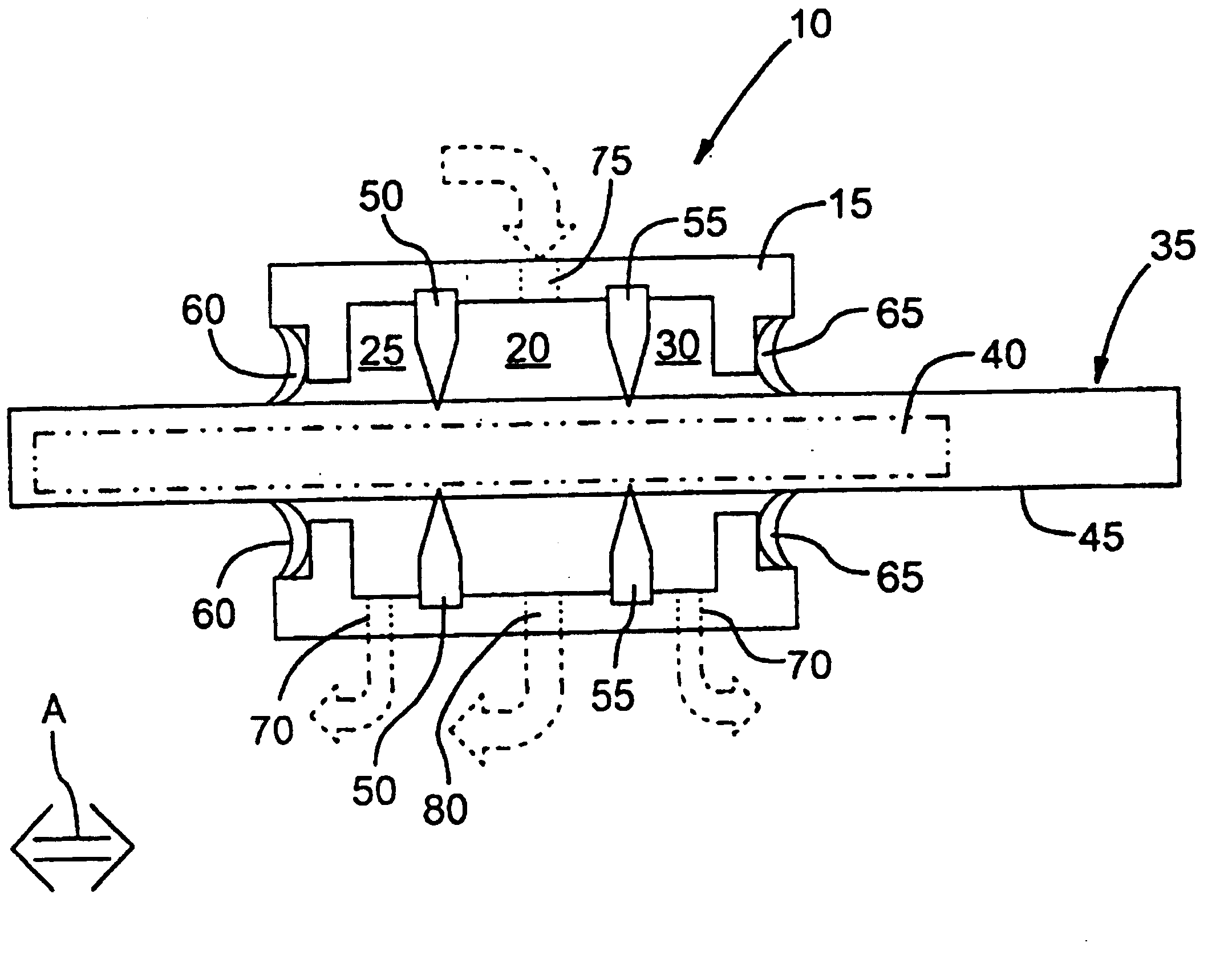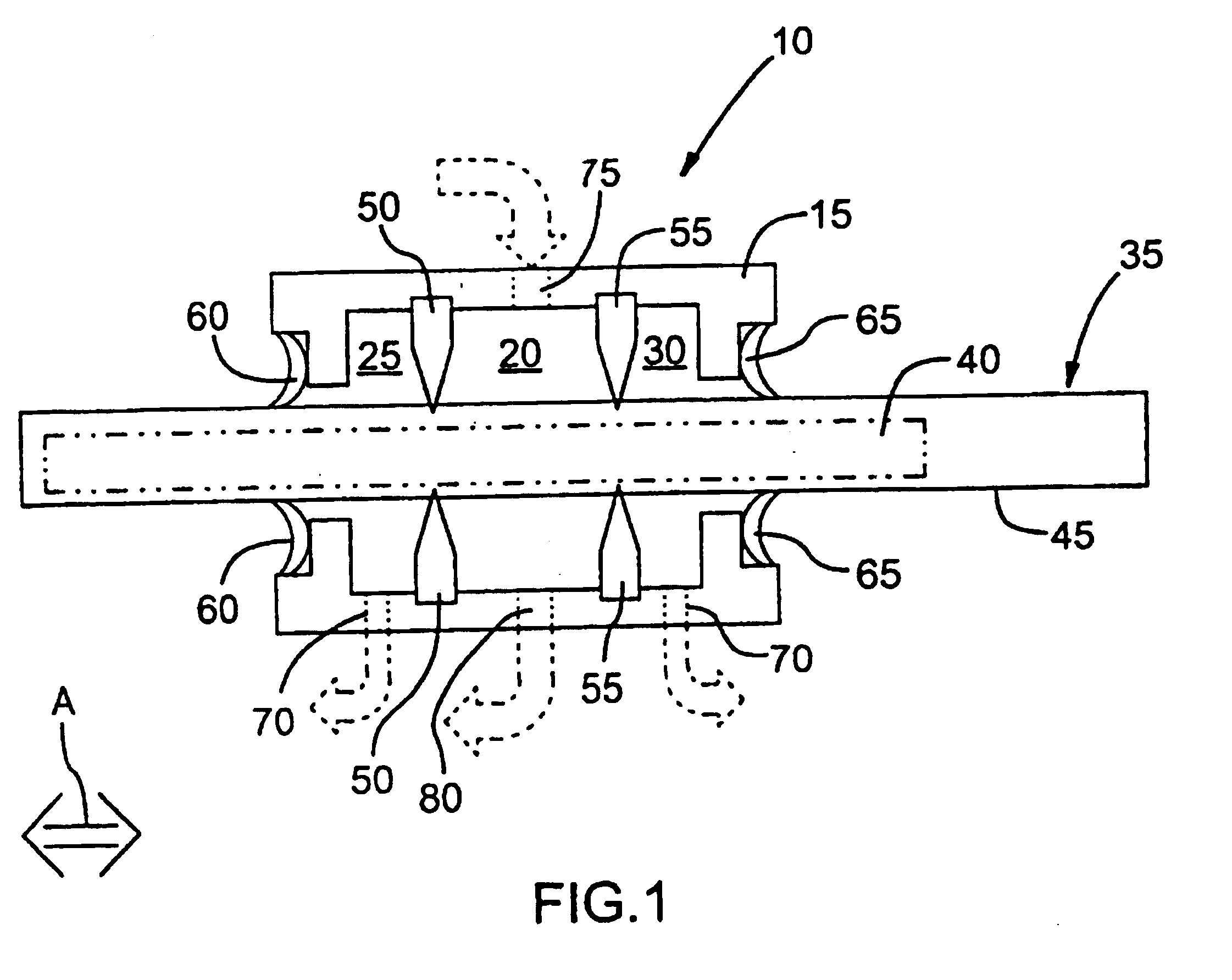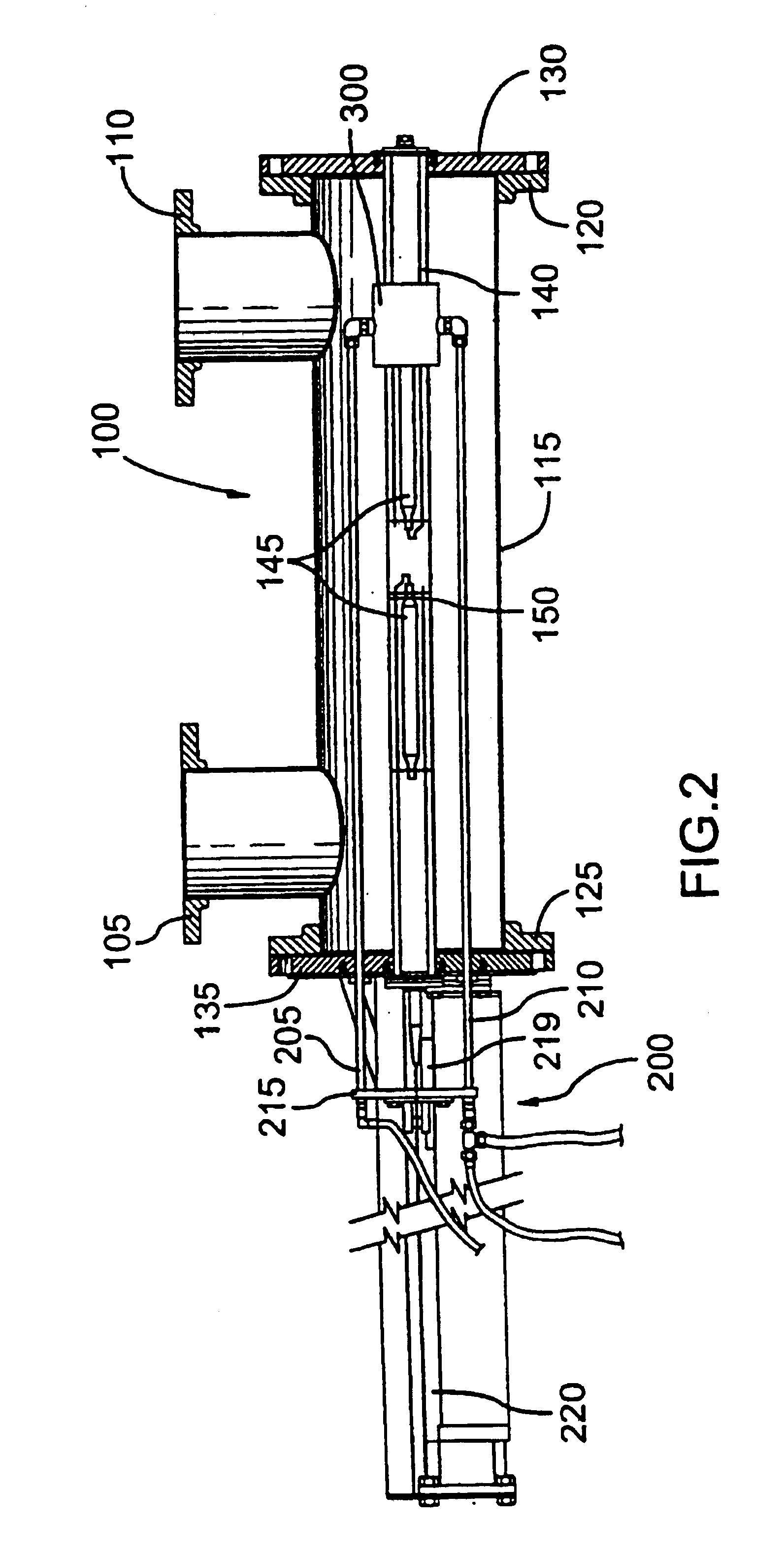Fluid treatment system and cleaning apparatus therefor
a treatment system and fluid technology, applied in the field of cleaning equipment, can solve the problems of affecting the cleaning effect, and reducing the efficiency of cleaning liquids, so as to achieve the effect of reducing the leakage of cleaning solution
- Summary
- Abstract
- Description
- Claims
- Application Information
AI Technical Summary
Benefits of technology
Problems solved by technology
Method used
Image
Examples
Embodiment Construction
With reference to FIG. 1, there is illustrated a cleaning apparatus 10. Cleaning apparatus 10 comprises a cleaning sleeve 15. Cleaning sleeve 15 comprises a cleaning chamber 20 and a pair of second chambers 25,30. Cleaning sleeve 15 is disposed over a radiation source assembly 35 comprising a radiation source 40 enclosed within a protective sleeve 45.
Cleaning chamber 20 is separated from second chambers 25,30 by a pair of seals 50,55.
Second chambers 25,30 are sealed from the exterior of the cleaning sleeve 15 by a pair of annular seals 60,65. Cleaning sleeve 15 is reversibly movable along the exterior of protective sleeve 45 in the direction of arrow A. The actuation of cleaning sleeve 15 along the exterior of protective sleeve 45 will be described in more detail hereinbelow.
Cleaning sleeve 15 further comprises a drain 70 from each of second chambers 25,30. Drain 70 may be utilized at atmospheric pressure. Ofcourse, the illustrated embodiment could be modified to have a single drain...
PUM
| Property | Measurement | Unit |
|---|---|---|
| frequency | aaaaa | aaaaa |
| pressure | aaaaa | aaaaa |
| pressure drop | aaaaa | aaaaa |
Abstract
Description
Claims
Application Information
 Login to View More
Login to View More - R&D
- Intellectual Property
- Life Sciences
- Materials
- Tech Scout
- Unparalleled Data Quality
- Higher Quality Content
- 60% Fewer Hallucinations
Browse by: Latest US Patents, China's latest patents, Technical Efficacy Thesaurus, Application Domain, Technology Topic, Popular Technical Reports.
© 2025 PatSnap. All rights reserved.Legal|Privacy policy|Modern Slavery Act Transparency Statement|Sitemap|About US| Contact US: help@patsnap.com



